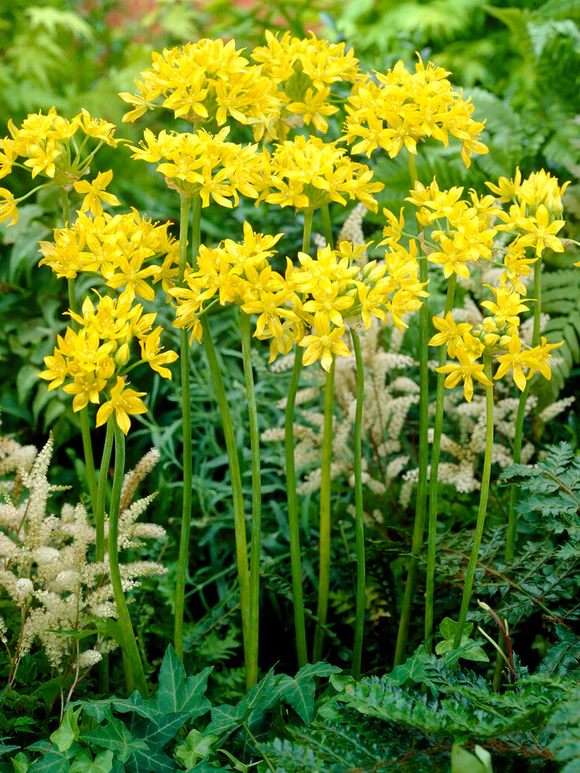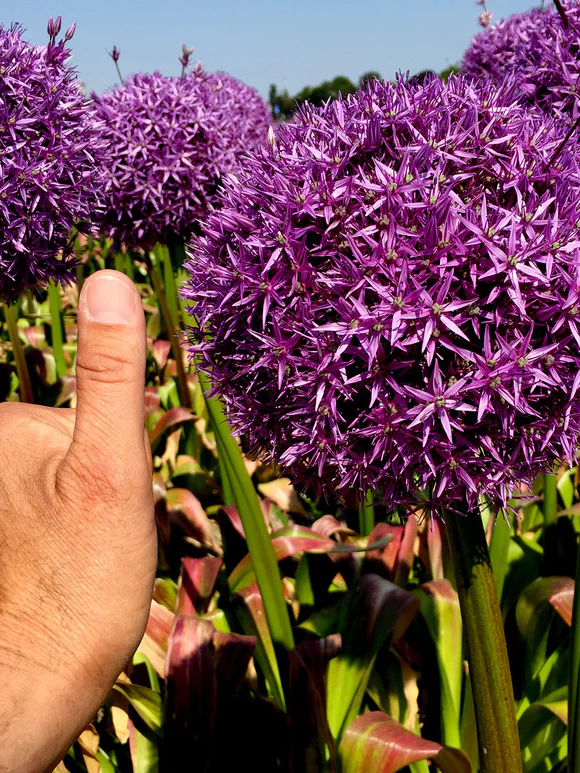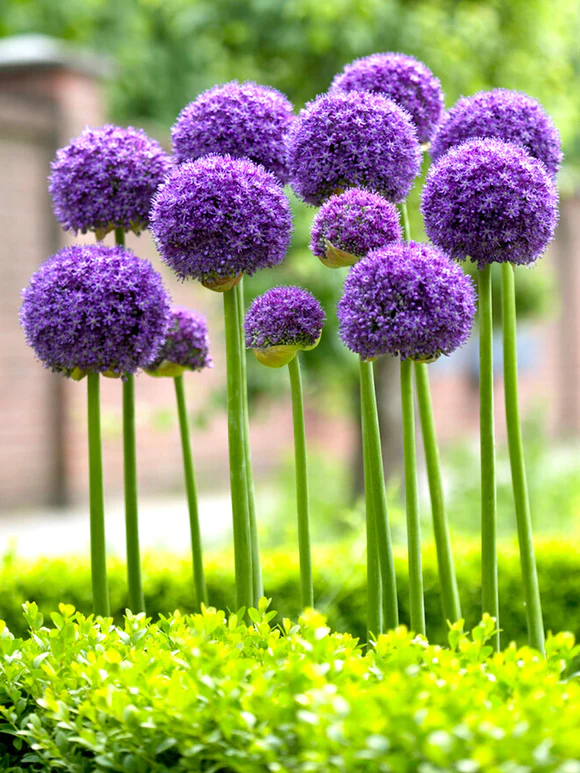Allium has been awarded Flower Bulb of the Year 2023. And not without reason! This majestic and imposing flower combines beautifully with other bulbs and perennials in the garden. What’s more, Alliums are a trusty friend to bees and butterflies. They are not only beautiful, but also good for biodiversity.
From small to grand
There’s no two ways about it: Alliums are here to stay. The large purple round blooms on tall stems of Allium aflatunense or the large Allium giganteum, for example, stand out beautifully in the garden. In addition to well-known types, you can find many other Allium varieties in different colours and sizes. From various shades of purple and pink, to white and even yellow. Depending on the variety, Alliums will grow anywhere between 15 cm to more than 150 cm tall. If you are looking for a slightly shorter variety for your balcony or patio, choose low-growing Allium karataviense, Allium cristophii or Allium schubertii. The bloom shape of the different Allium types also varies widely: from 3 cm to about 30 cm. In other words, there is something for everyone.
 Combinations
Combinations
Combine Alliums with perennials and other spring bulbs for the best results. This is a good way to hide the leaves, which are not Alliums’ best feature. Tall varieties look lovely when they grow well above the rest of the border planting. With their spherical shape, the flowers contrast perfectly with perennials. Alliums flower a little later in spring (from April through July), making them perfect for bridging the season between spring-flowering bulbs and the summer border.
Planting
Plant Alliums between October and December in a sunny spot, in well-drained soil. Some varieties will also tolerate partial shade. Since Alliums do not like getting their roots wet, it is best to mix some coarse sand into the soil before planting them. Plant the bulbs twice as deep as they are tall and about 10/15 (bulb size <8 cm) to 50 cm (bulb size > 8 cm) apart. After flowering, the Allium bulbs can stay in the ground, but bear in mind that the flowers will get a little smaller every year. The wilted Allium flowers will remain decorative even after flowering, in autumn and winter.

Nectar-rich flowers for biodiversity
Alliums are bursting with nectar! Insects, butterflies and bees love nectar, so Alliums promote biodiversity. Did you know that the bulbous flower of Alliums is actually made up of many small flowers? Insects love the nectar they find in these tiny flowers. When they feed, they also pollinate other plants which, in turn, can reproduce. In other words, flowers, bees, butterflies and other insects in the garden are very important for nature!
More information about flower bulbs is available at www.flowerbulbs.co.uk.
To view a good selection of Alliums for sale at Dutchgrown click here
Mark Snelling
All images copyright Dutchgrown
If you have enjoyed reading our blog post then why not fill in the form provided to allow us to send you our blog posts and newsletters by email. For all major gardening products, visit our shop from the menu above.

